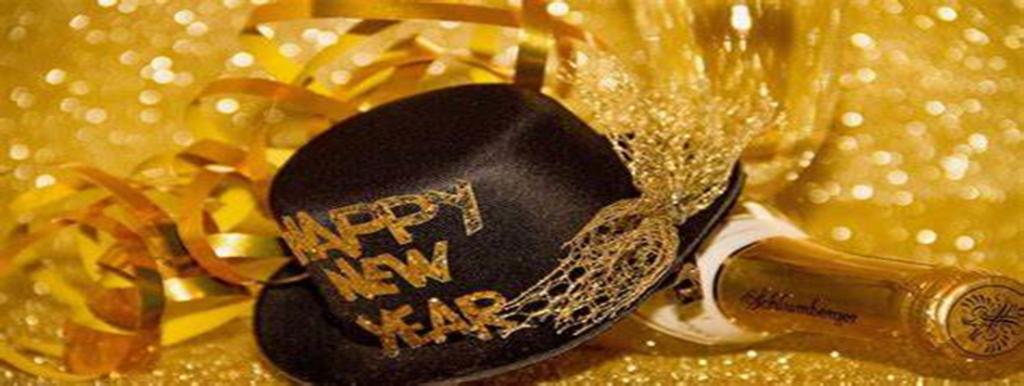Out with the old. In with the New. That’s a New Year’s tradition we celebrate each year. New Year’s celebrations have been recorded for at least four thousand years. Civilizations have celebrated it on different days and in many different ways.
Probably the earliest recorded festival was the ancient Babylonian festival called Akitu. The vernal equinox determined when to celebrate. That is the day in March with an equal amount of sunlight and darkness. Their celebration lasted eleven days. Akitu was also the period when new Babylonian kings were crowned, or the mandates of the current ones were symbolically renewed.
The mighty Roman Empire also used a calendar based on the vernal equinox. Their calendar was created by Romulus, the founder of Rome. It consisted of 10 months and 304 days. Numa Pompilius, in the eighth century, added the months of January and February. Julius Caesar introduced the Julian calendar in 46 B.C. to accommodate the fact that the calendar had fallen out of sync with the sun.
Caesar instituted January 1 as the first day of the year. January’s namesake was the Roman God Janus. He had two faces which allowed him to look forward into the future and back into the past. The Romans celebrated the day by offering sacrifices to Janus and exchanging gifts with one another. They also decorated their homes with laurel branches and attended raucous parties.
Caesar’s calendar was quite accurate. It lost only 11 ½ minutes a year. But by the sixteenth century it had lost 10 days on the solar calendar. To correct that inaccuracy Pope Gregory XIII, in 1582, ordered 10 days to be added to the calendar along with a corrective measure. The Gregorian calendar loses 26 seconds per year, a difference of one day every 3,323 years. It was not officially accepted, though, by Germany and the Netherlands until 1698. Russia adopted it after the revolution of 1918. Greece adopted it in 1923. Many Orthodox churches still use the Julian calendar, which is now 13 days behind the Gregorian.
The United States and Great Britain continued to use the Julian calendar until George II signed a Parliamentary bill allowing for Wednesday, September 2nd, 1752, to be followed by Thursday September 14th, 1752. The bill also authorized New Year’s Day to move to January 1 from its previous March 25 date.
New Year’s Day Celebrations
The way the first day of a new year is celebrated has a varied history. The earliest celebrations, though, were more paganist in nature. They celebrated Earth’s cycles and appreciations of various Gods.
Christian traditions celebrated the Feast of the Circumcision of Christ on New Year’s Day. Joseph and Mary named their baby boy Jesus and circumcised Him eight days later in keeping with the old Jewish custom. All males were circumcised as a sign of the eternal covenant between God and the Jewish People. Since the Church authorities established December 25 as the official birth of Jesus, the remembrance would be eight days later on January 1. The name of the celebration was changed in 1969 by the Roman Catholic Church to “Solemnity of Mary” to reflect their emphasis on Mary’s role as mother of the Savior.
Great Britain: believes the first guest of the New Year, a male, will bring them fortune. He will enter through the front door and is supposed to bring a loaf for the kitchen, a drink for the head of the family, and coal to light the fire. Otherwise, he is not allowed. These things bring good fortune throughout the year.
Austria: Suckling pigs are their good luck charms. The Austrians serve them with edible pigs and peppermint ice creams as dessert.
Japan: New Years, is a celebration of renewal. Oshogatsu, New Years, is the most important festival. Business is shut down for the day. Homes are decorated to welcome luck and fortune. The entire house is cleaned, debts are paid, and unresolved issues are taken care of. Bells are rung 108 times in Buddhist temples symbolizing 108 human weaknesses being eliminated from the previous year.
Scotland: The birthplace of “Auld Lang Syne”, Neighbors visit each other after midnight and convey New Year’s wishes.
Spain: They eat 12 grapes at midnight. The grapes are meant to ensure twelve happy months in the coming year.
United States: Kissing at the stroke of midnight. It is a gesture which purifies everything evil. Football plays an important part as does the ball dropping in Times Square.
In the twentieth century New Years, for the most part, has separated into its own celebration not associated with religion. Instead, it is associated with nationality, introspection, and relationships.
Today we watch New Year’s celebrations all over the globe and can celebrate it with the world. With 39 different time zones in use around the globe, it takes 26 hours to encompass all time zones.
Have a Happy New Year! Celebrate it responsibly!!
